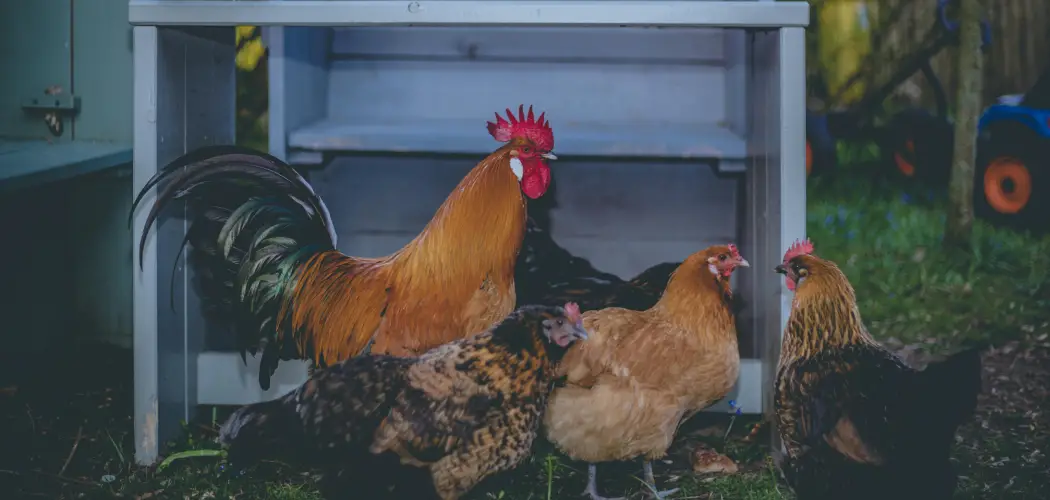Relocating chickens to a new coop is an important endeavor for any poultry keeper looking to ensure the health and happiness of their feathered friends. Understanding how to move chickens to a new coop effectively is crucial in mitigating stress for both the chickens and the keeper.
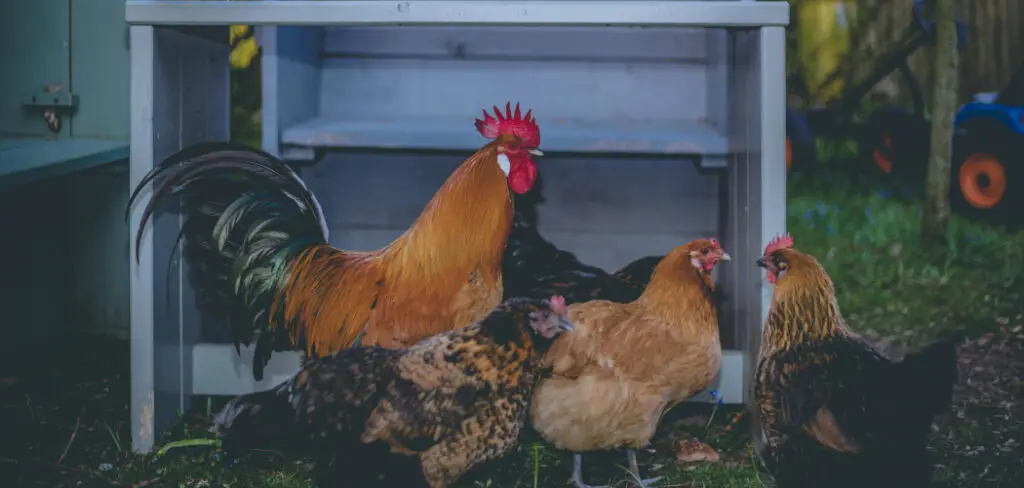
This guide aims to outline essential planning strategies and techniques designed to minimize stress throughout the moving process. We will provide a comprehensive overview of the steps and considerations necessary for a successful transition, from preparing the new coop to ensuring the chickens adjust well to their new environment.
Proper preparation, understanding chicken behavior, and gentle handling are key components that will be covered to facilitate a smooth move.
Preparing the New Coop
Before the chickens make their move, the new coop must be prepared meticulously to ensure a seamless transition. This preparation is crucial not just for their comfort but also for their health and safety.
A. Cleaning and Disinfecting
The first step in preparing your new coop involves thorough cleaning and disinfecting. Remove any debris, dirt, and residues from previous inhabitants to prevent the spread of diseases. Use a poultry-safe disinfectant to clean all surfaces, including walls, floors, and any equipment remaining in the coop.
Allow the coop to air dry completely before introducing any bedding materials. This step ensures that your chickens will enter a clean, healthy environment, minimizing the risk of illness.
B. Setup and Layout
Once the coop is clean, it’s time to arrange the interior to make it as comfortable and functional as possible for your chickens. Position nesting boxes in quiet, dim areas to provide a serene environment for egg-laying. Set up perches at various heights to accommodate the natural roosting instincts of chickens, allowing them space to sleep comfortably off the ground.
Place feeders and waterers in easily accessible areas, ensuring that there is enough space for all chickens to eat and drink without competition. The layout of your coop should promote a stress-free environment encouraging natural behaviors.
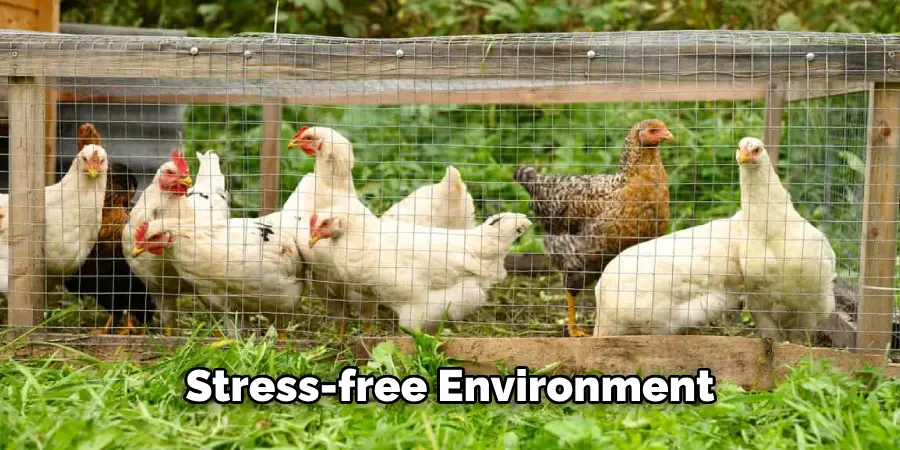
C. Secure the Environment
Securing the coop against predators is vital for the safety of your chickens. Inspect the coop for any gaps or weaknesses that might allow predators to enter and reinforce these areas as needed. Add locks to doors and install hardware cloth instead of chicken wire for security against smaller predators.
Additionally, ensure the coop and surrounding area are well-fenced to prevent escapes and keep potential threats at bay. Taking these precautions can create a safe haven for your chickens in their new home.
How to Move Chickens to A New Coop: Familiarizing Chickens with the New Coop
The period leading up to the actual move is crucial for your chickens to adapt to their new environment. This stage aims to reduce the stress associated with the transition and promote a smoother adjustment period for the flock.
A. Allow Exploration
Begin by allowing your chickens to explore the new coop a few days before the planned move. This can be achieved by opening the coop during the day and encouraging them to enter and investigate on their own terms. Chickens are curious by nature, and given time, they will start to venture into the new space, peck around, and explore its nooks and crannies.
This exploration period helps reduce the shock of relocation, as the chickens will not be introduced to a completely unfamiliar environment all at once.

B. Place Familiar Items
To further ease the transition, transfer familiar items from the old coop to the new coop. This includes feeders, waterers, and perches that the chickens are used to. These familiar objects can help calm the chickens and make the new coop feel more like home. It provides a sense of continuity and security, as these items are integral parts of their daily lives and routines.
C. Monitor Behavior
Throughout the familiarization process, closely observe the chickens’ behavior. Look for signs of stress or discomfort, such as excessive pecking, feather picking, or unusual vocalizations. Chickens showing signs of stress may require more adjusting time or additional comforting measures. Conversely, observing chickens engaging in normal behaviors such as scratching, preening, and dust bathing in the new coop indicates that they are beginning to accept their new surroundings. Monitoring their behavior ensures their well-being during the transition and provides insights into how well they adapt to their new environment.
This step of allowing chickens to familiarize themselves with the new coop is a gentle and effective approach to ensuring that the actual move is as stress-free as possible for both the chickens and their keepers. By following these guidelines, poultry keepers can facilitate a successful transition to the new coop, laying the groundwork for happy, healthy chickens in their new home.
How to Move Chickens to A New Coop: Moving Day Preparation
The transition day when chickens are moved to their new coop must be meticulously planned to ensure a smooth and stress-free shift for both the birds and their keeper. Proper preparation is key to minimizing stress and acclimating chickens to their new environment swiftly and effectively.
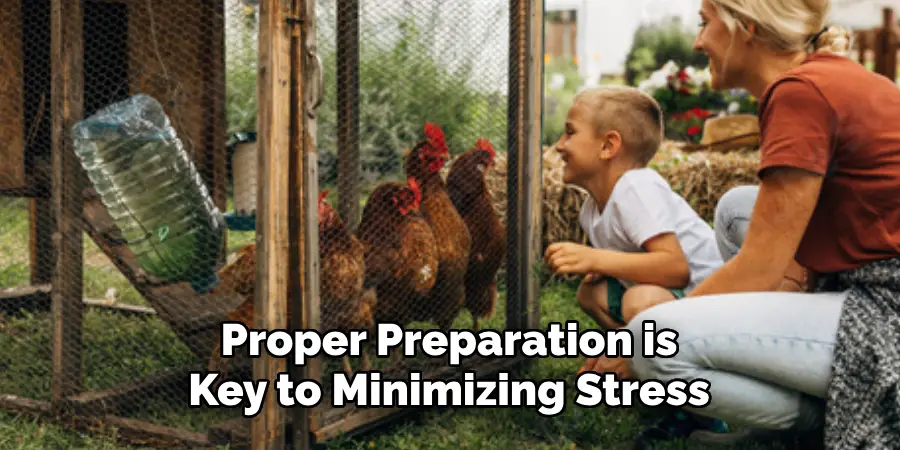
A. Choose the Right Time
Choosing the appropriate time for the move is critical. Chickens are naturally more relaxed and calm during the evening or early morning. Planning the move during these times can significantly reduce the stress associated with the transition.
The cooler temperatures of early morning or late evening are also beneficial, as they help prevent the chickens from overheating during transportation. Additionally, moving chickens at these times aligns with their natural roosting behaviors, making them more cooperative and easier to handle.
B. Prepare Transportation
Safe transportation is essential for moving chickens from the old coop to the new one. Use suitable containers or crates that provide adequate ventilation, space, and comfort for the chickens during the move.
Ensure that the containers are secure but not overly restrictive, allowing the chickens enough room to stand and turn around without crowding. It’s important to make the travel as short and as comfortable as possible to reduce potential stress or injury to the birds.
C. Gather Necessary Supplies
Before the move, gather all necessary supplies to ensure a smooth transition. These supplies include bedding material for the new coop, sufficient food and water for the moving period, and a first aid kit equipped with essentials for treating any minor injuries or stress signs in chickens. Preparing these items in advance will streamline the moving process and help quickly settle the chickens into their new home. Additionally, having a few familiar items ready in the new coop can ease the chickens’ transition, making them feel more at home.
By carefully planning the moving day and following these preparatory steps, poultry keepers can significantly minimize the stress experienced by their flock.
Choosing a calm time for the move, preparing appropriate transportation, and gathering necessary supplies are all steps that contribute to a successful and smooth transition to the new coop. These efforts help ensure that the chickens quickly adjust to their new surroundings, maintaining their health and happiness post-move.
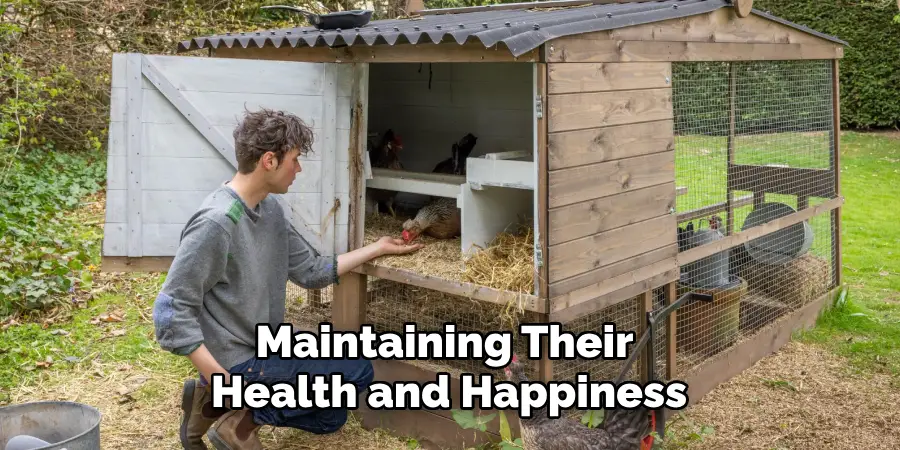
Moving Chickens to the New Coop
The day has arrived to move the chickens into their new home. This phase is critical in the transition process and should be approached with patience and care to ensure the chickens’ well-being throughout the move.
A. Capture Chickens Carefully
Capturing the chickens for their move requires a calm and gentle approach. Stress and anxiety in chickens can be minimized by avoiding any sudden movements or loud noises that might frighten them. It’s best to capture each chicken individually, using both hands to gently but firmly hold them, supporting their wings against their body to prevent flapping.
This method reduces the risk of injury and calms the chicken, making the transition smoother. If possible, perform this step with the help of another person to make the process quicker and more efficient, thereby reducing the time chickens spend in a stressed state.
B. Transport Safely
Once captured, place each chicken in a prepared transport container with adequate space, ventilation, and comfort. These containers should be sturdy enough to protect the chickens during the move and allow fresh air to circulate freely.
Soft bedding, such as straw or wood shavings, can be added to the bottom of the containers to absorb shocks and provide a more comfortable ride. Ensure that the containers are secure in the vehicle, preventing any unnecessary movement that could cause stress or injury to the chickens during transportation.

C. Release in New Coop
Upon arrival at the new coop, allow the chickens to gradually acclimate to their new surroundings. Open the transport containers and gently encourage the chickens to step out and explore their new home on their own terms. This cautious approach helps in reducing anxiety and stress among the chickens. Initially, they may seem hesitant, but curiosity will soon lead them to start exploring.
It’s essential to monitor the chickens during this time, looking for signs of stress or discomfort and ensuring they discover the locations of essential resources like food, water, and nesting areas. Allowing chickens to settle into their new environment at their own pace promotes a quicker and more successful adjustment to their new home.
Transition Period and Adjustment
The period following the move into a new coop is critical for ensuring the chickens’ long-term welfare and comfort in their new environment. This phase requires careful attention to their behavior and habits to facilitate a smooth adjustment.
A. Provide Adequate Supervision
Monitor chickens closely during the transition period to ensure they settle in and adjust well to their new surroundings. Look for signs of stress or discomfort, such as reduced eating, excessive vocalization, or aggressive behavior toward fellow chickens.
Early detection of these signs can help address any issues promptly, minimizing the negative impact on their health and well-being. Additionally, observing the chickens’ interactions with the new coop’s features, such as perches, nesting boxes, and feeding stations, is crucial for assessing their comfort levels and making necessary adjustments.
B. Offer Comfort and Reassurance
During this time, provide comfort and reassurance to the chickens through gentle handling and familiarization with the new coop. Spending time with the chickens in their new environment can help them feel more secure and build trust.

If possible, introducing familiar items from their previous coop can also aid in this transition by providing a sense of continuity and safety. Comforting behaviors, such as talking softly and offering treats, can further reinforce a positive association with the new coop and ease the adjustment process.
C. Maintain Routine
Sticking to regular feeding, watering, and cleaning routines is essential to provide stability and familiarity for the chickens during the adjustment period. Consistency in these activities helps establish a sense of normalcy and security, enabling the chickens to adapt more quickly to their new home.
Ensure that food and water are easily accessible and that the coop is kept clean and well-maintained. Maintaining these routines also promotes healthy habits and reduces the risk of stress-induced issues among the flock.
By focusing on these key areas during the transition period, poultry keepers can greatly enhance their chickens’ adjustment process, leading to a happier and healthier flock in their new home.
Addressing Challenges and Concerns
Transitioning chickens into a new coop can present challenges requiring attention and management. Understanding and addressing these concerns promptly is crucial for the health and harmony of the flock.
A. Addressing Aggression
Aggression or bullying among chickens in the new coop can stem from the stress of the new environment or established pecking order disruptions. Monitor the flock closely for any signs of aggression, such as pecking, chasing, or blocking access to food and water.
Introducing environmental enrichments like perches, hiding spots, and dust bathing areas can help reduce stress and aggression by providing distractions and more space for individual activities. If necessary, temporarily separate aggressive chickens to give the flock time to settle without the pressure of constant conflict.
B. Monitoring Health
The adjustment period can also tax the chickens’ health, making close observation for any signs of illness or distress vital. Look out for symptoms such as lethargy, abnormal droppings, reduced appetite, or unusual behavior. Ensure a clean, safe, and comfortable environment to support their health, and provide vaccinations or treatments as a veterinarian recommends. Early detection and intervention are key to preventing the spread of disease and maintaining a healthy flock.
C. Providing Support
Chickens benefit from supportive measures during the adjustment phase to their new surroundings. This can include additional human interaction to offer reassurance and promote bonding. Regular checks and maintaining a calm, peaceful environment can also contribute to their well-being.
Adjust feed, water, and the coop layout as necessary to accommodate the chickens’ preferences and needs during this time. Offering nutritional supplements can also help support their immune system during the transition.
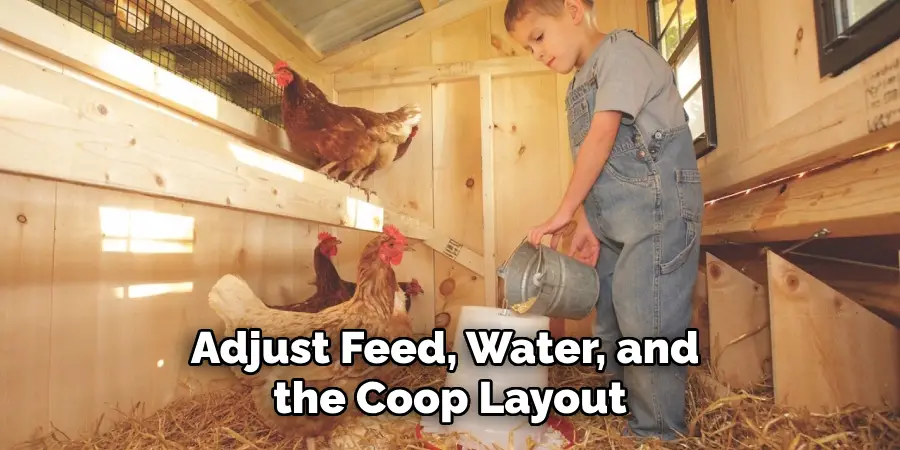
By addressing aggression, closely monitoring health, and providing supportive care, poultry keepers can effectively manage the challenges of introducing chickens to a new coop and ensure a smooth and successful adjustment period.
Frequently Asked Questions
Q1. How Long Does It Typically Take for Chickens to Adjust to A New Coop?
A1. The adjustment period can vary, but most chickens start to feel comfortable in their new environment within 1 to 2 weeks. Monitoring their behavior and ensuring they have everything they need are key to a successful transition.
Q2. What Are the Signs that My Chickens Have Not Adjusted Well to The New Coop?
A2. Signs of poor adjustment include prolonged periods of stress indicators such as reduced egg production, excessive pecking or aggression, vocal distress, feather picking, or avoidance of certain areas of the coop.
Q3. How Can I Reduce Stress for My Chickens During the Move?
A3. Gradually introducing your chickens to the new coop, maintaining familiar routines, and ensuring the coop is safe and comfortable can significantly reduce stress. Also, providing treats and spending time near them can help reassure your chickens.
Q4. Is It Necessary to Quarantine New Chickens Before Introducing Them to An Existing Flock in A New Coop?
A4. Yes, quarantining new chickens for at least 14 days is critical to prevent the potential spread of diseases to your existing flock. This period also allows you to observe the new chickens for any signs of illness or stress before introduction.
Q5. How Do I Deal with Bullying or Pecking Order Fights in The New Coop?
A5. Providing ample space, adding hiding spots or visual barriers, and ensuring multiple feeding and watering stations can help minimize conflict. In severe cases, you may need to separate the aggressors temporarily until the hierarchy stabilizes.
Q6. Can Changing the Coop Layout Help Chickens Adjust Faster?
A6. Familiarity helps with adjustment, so initially, mimicking the layout of the old coop can be beneficial. However, gradual changes or improvements can be made once the chickens seem comfortable and settled.
Conclusion
In this guide, we navigated through the critical steps and considerations essential for successfully moving chickens to a new coop. Beginning with preparation, focusing on transition strategies, and addressing potential challenges, we’ve outlined a comprehensive path to ensure a smooth shift for both you and your feathered friends.
Key to this process has been the emphasis on patience, careful planning, and gentle handling, all aimed at minimizing stress and ensuring a seamless transition. How to move chickens to a new coop is more than just a simple task; it’s a thoughtful process that requires attention to detail and a deep understanding of your chickens’ needs.
We wish you immense success in your chicken relocation endeavor. May your chickens thrive and find happiness in their new home, benefiting from the care and dedication you’ve invested into making their transition as smooth as possible. Happy, healthy chickens result in a joyful and rewarding experience for every poultry keeper.
About
Outdoor Fixes is a distinguished figure in the world of Diy design, with a decade of expertise creating innovative and sustainable Diy solutions.
His professional focus lies in merging traditional craftsmanship with modern manufacturing techniques,
fostering designs that are both practical and environmentally conscious. As the author of diy,
outdoorfixes delves into the art and science of outdoorfixes-making, inspiring artisans and industry professionals alike.
Education RMIT University
(Melbourne, Australia) Associate Degree in Design (Outdoor Fixes) Focus on sustainable design, industry-driven projects,
and practical craftsmanship. Gained hands-on experience with traditional and digital manufacturing tools, such as CAD and CNC software.
Nottingham Trent University
(United Kingdom) Bachelor’s in outdoorfixes.com and Product Design (Honors) Specialized in product design with a focus on blending creativity with production
techniques. Participated in industry projects, working with companies like John Lewis and Vitsoe to gain real-world insights.
Publications and Impact
In diy, Outdoor Fixes his insights on indoor design processes, materials, and strategies for efficient production.
His writing bridges the gap between artisan knowledge and modern industry needs, making it a must-read for both budding designers and seasoned professionals.

